International Relations: May 2024 UPSC Current Affairs | UPSC Mains: International Relations PDF Download
Vietnam Push for Non-Market Economy Status

Why in News?
Vietnam has urged the United States administration to promptly reclassify its status from "non-market economy" to "market economy," seeking relief from high import taxes currently imposed on goods from Southeast Asian nations.
What is USA’s Concept of Non-Market Economies (NME)?
About:
In the US, a Non-Market Economy (NME) refers to any foreign country identified by the US Department of Commerce as not adhering to market-based cost or pricing structures. Consequently, sales of goods in these countries may not accurately reflect their fair value.
Countries Listed:
Countries designated as NMEs include Armenia, Azerbaijan, Belarus, China, Georgia, Kyrgyz Republic, Moldova, Russia, Tajikistan, Turkmenistan, Uzbekistan, and Vietnam.
Criteria:
The United States designates a country as a non-market economy based on several factors:
- Convertibility of the country’s currency.
- Determination of wage rates through free bargaining between labor and management.
- Permission for joint ventures or other foreign investments.
- Ownership of means of production by the state.
- Government control over resource allocation, price, and output decisions.
- Other considerations such as human rights.
Anti-Dumping Duty on Non-Market Economy:
- The NME designation enables the US to impose anti-dumping duties on imports from these countries. Dumping occurs when a country exports goods at lower prices than those in the domestic market, potentially harming industries in the importing country.
Determining Anti-Dumping Duty:
- For non-market economies like Vietnam, the US calculates anti-dumping duties by comparing the product's value to that in a third country, often Bangladesh, which is considered a market economy. This comparison serves as a proxy for production costs in the non-market economy due to potential lack of transparent pricing mechanisms.
NME and World Trade Organisation (WTO):
- While the WTO does not explicitly recognize or endorse NME status, it allows member countries to use alternative methodologies to calculate normal values in anti-dumping investigations. This flexibility permits adaptation to the unique economic structures of NMEs.
What are Vietnam's Arguments Regarding its Non-Market Economy (NME) Status?
Vietnam’s Arguments:
- Currency Convertibility: Vietnam's currency is transparently convertible based on market principles.
- Wage Determination: Wage rates result from free negotiations between labor and management.
- Foreign Investment: Vietnam permits foreign investment and has become an attractive destination for it.
- Means of Production: The government does not significantly own or control means of production.
- Resource Allocation: Government control over resource allocation or price/output decisions is minimal.
- Market Principles: Vietnam’s economy operates based on market principles, including legal frameworks, corporate governance, and diversified foreign relations.
- Calculation Flaws: Vietnam’s Center for WTO and International Trade argues that the method used to calculate anti-dumping duties results in artificially inflated dumping margins, inaccurately reflecting Vietnamese companies' practices.
US Apprehensions:
- The US Commerce Department is currently reassessing Vietnam's status.
- US steelmakers and the American Shrimp Processors Association oppose changing Vietnam’s status to a market economy, citing concerns over Vietnam's restrictions on land ownership, weak labor laws, and potential adverse effects on their industries, including reduced shrimp duties and advantages for Chinese state firms operating in Vietnam.
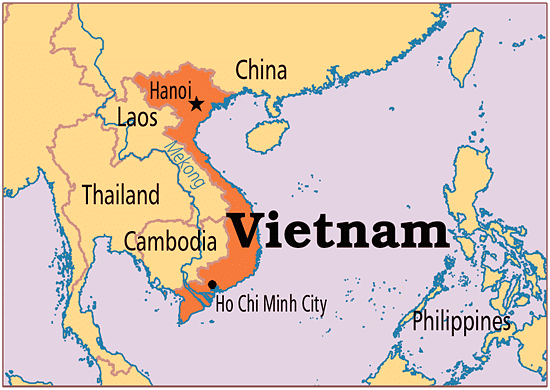
India Sugarcane Subsidy under WTO Scrutiny

Why in News?
The US and Australia have raised concerns about India allegedly surpassing subsidy limits set by the WTO's Agreement on Agriculture (AoA), suggesting potential distortions in global trade dynamics.
- Recent submissions to the WTO's Committee on Agriculture scrutinize India's subsidies for sugarcane over a four-year period (2018-19 to 2021-22), highlighting consistent breaches of the permissible subsidy threshold.
Calculation Methodology and Dispute
- Calculation of Subsidy (AMS): The report employs a methodology endorsed by a WTO panel that previously ruled against Indian sugar subsidies from 2014-15 to 2018-19. This approach intricately considers India's Fair and Remunerative Price (FRP) for sugarcane, which acts as a minimum price for sugar mills, alongside State-Advised Prices (SAPs) in specific regions.
Data and Analysis
- Market Price Support (MPS) Figures: India's MPS for sugarcane in 2018-19, 2019-20, 2020-21, and 2021-22 amounted to $15.9 billion, $14.6 billion, $16.5 billion, and $17.6 billion, respectively. These figures consistently exceeded 90% of the value of sugar production each year, significantly surpassing the permitted threshold of 10%.
- Critique of Calculation Methodology: The analysis includes the entirety of sugarcane production in India for subsidy calculation, regardless of whether the sugarcane was delivered to sugar mills for crushing.
- India's Rejection and Appeal: India disputed the WTO panel's classification of FRP and SAPs as market price support under the AoA. The subsequent appeal has stalled the adoption of the panel report by the WTO Dispute Settlement Body due to the inactive status of the WTO Appellate Body.
- Challenges in Resolution: The WTO's Appellate Body's inactive status has delayed decisions on appeals, including India's, until its restoration.
India – Nepal Border Dispute
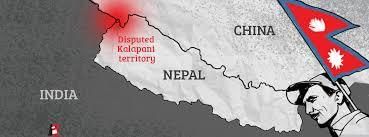
Why in News?
The Government of Nepal has announced plans to issue a Rs-100 currency note featuring a map of the country that includes territories claimed by India.
Background
- Updated Map: In May 2020, Nepal released a revised political map claiming Kalapani, Limpiyadhura, and Lipulekh in Uttarakhand as part of Nepal.
- Image Caption: India-Nepal Border Areas
- Territorial Claims: Both India and Nepal assert claims over the Kalapani region.
- Kalapani Region: Named after the Kali River (Mahakali in Nepal), which is as significant to Nepal as the Ganga is to India.
- Natural Border: The Kali River acts as a natural boundary between India and Nepal.
- Disputed Source: The source of the Kali River is contested by both countries.
India’s Stand
- Location: India claims Kalapani is in Pithoragarh, Uttarakhand, where the river originates.
Nepal’s Stand
- Origin Point: Nepal claims the river starts from Limpiyadhura or Lipulekh, considering these locations part of Nepal’s Sudurpaschim province.
Historical Background
- Treaty of Sagauli (1816): This treaty between British East India Company and Nepal marked the Kali River as Nepal’s western boundary with India. However, it did not specify the ridgeline, leading to boundary disputes.
- First Official Dispute: Nepal officially raised the issue of Kalapani with India in 1998.
Recent Dispute Between the Two Countries
- 2020 Road Inauguration: Indian Defence Minister Rajnath Singh inaugurated a road linking India to China via Lipulekh pass, which shortened the travel time to Kailash Mansarovar.
- Nepal’s Protest: Nepal claimed this move violated a 2014 agreement to resolve boundary issues in Kalapani and Susta.
- Constitutional Amendment: Nepal passed a Constitutional Amendment to include Kalapani, Lipulekh, and Limpiyadhura in its map.
- Communication Breakdown: This led to a temporary breakdown in dialogue between the two countries.
- India’s Response: India rejected the new map, calling it “artificial,” “unilateral,” and “unacceptable,” urging Nepal to return to dialogue.
News Summary
- Currency Note Decision: Nepal will issue a Rs-100 note with a map including Lipulekh, Kalapani, and Limpiyadhura.
- Cabinet Decision: The decision was made in a cabinet meeting chaired by Prime Minister Pushpa Kamal Dahal ‘Prachanda’.
- India’s Reaction: External Affairs Minister S Jaishankar stated that Nepal’s move will not alter the situation on the ground.
- Implementation: The decision will be sent to the Rastra Bank, which could take up to a year to print the new note. The central bank will issue tenders for printing quality notes.
- Local Opposition: Some former diplomats and central bank governors in Nepal have criticized the move as “unwise” and “provocative”.
Way Forward
- Resolve Through Dialogue: Given the historical and cultural ties, it is imperative for India to resolve this issue quickly.
- Strategic Importance: Nepal’s strategic relevance is underscored by the free movement of people between the two countries and the significant Nepali diaspora in India, which greatly contributes to Nepal’s economy.
- Political Resolution: Resolving the boundary dispute at the political level is in the best interests of both nations.
Japan’s Shifting Diplomatic Posture
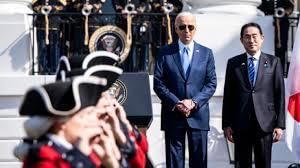
Why in News?
Amid shifting global geopolitics, Japan, historically known for its post-war pacifism, is enhancing its military capabilities. This shift could significantly impact the balance of power in Asia and beyond.
What are the Key Facts About Japan’s Diplomatic Posture?
Japan's Diplomatic Journey Before World War II
- Seclusion (1600s-1850s): For over 200 years, Japan maintained isolation to preserve social order and avoid foreign influence.
- Catching Up (1850s-1900s): The arrival of Portuguese Commodore Perry's "Black Ships" in 1853 ended Japan's seclusion. Japan modernized its military and adopted Western technology to strengthen its nation. Renegotiated treaties to regain control over trade and foreign policy.
- Aggressive Stance (1900s-1930s): Japan faced unequal treatment by Western powers, notably the rejection of the racial equality clause in the Treaty of Versailles. Frustration led to aggressive expansionism, including the militaristic takeover of Manchuria in 1931 and forming the Axis Alliance before World War II. This drive to challenge the Western-dominated world order culminated in World War II.
- Japan's Diplomatic Journey After World War II: Post-World War II, Japan, under U.S. occupation, adopted a policy of pacifism. Limited military spending and focused on economic rebuilding, becoming the world's second-largest economy by the 1970s. Recently, Japan has shifted from strict post-war pacifism to a more assertive global role.
What Factors Led Japan to Change its Diplomatic Posture?
- External Factors: China's Rise: China's military expansion and territorial claims in the East China Sea, including the Senkaku Islands, have prompted Japan to bolster its defenses.
- North Korean Threat: North Korea's nuclear and missile developments pose a major security concern for Japan.
- Uncertain U.S. Commitment: Perceived decline in U.S. commitment to Asian security under the Trump administration and rising U.S. isolationism have pushed Japan towards self-reliance in defense.
- Internal Factors: Conservative Resurgence: Growing conservative voices in Japan advocate for a more active security role, viewing Japan as a "normal power" responsible for regional stability.
- Pacifist Fatigue: Reliance on the U.S. for security is increasingly seen as unsustainable in the face of a changing regional landscape.
How is Japan Changing its Diplomatic Posture?
Manifestations of Change
- Increased Defence Spending: Japan has significantly raised its defense budget, surpassing the self-imposed cap of 1% of GDP.
- From 1960 to 2020, Japan's military spending remained at or below 1% of GDP.
- Plans to increase annual defense spending to 2% of GDP by 2027.
- Military Buildup: Acquiring new capabilities, including offensive weapons like cruise missiles, and easing arms export restrictions.
- Collaborating with the UK and Italy on the Global Combat Air Programme (GCAP) for a next-generation stealth fighter.
- Deeper Security Cooperation with Allies: Enhancing joint military exercises and integrating command structures with the U.S.
- Notable exercises include Keen Sword, Orient Shield, and Valiant Shield.
- Easing defense export rules to collaborate with Britain and Italy on new fighter jets.
- Active Regional Diplomacy: Strengthening ties with regional powers like India and Australia, promoting a "free and open Indo-Pacific."
- Involvement in the Quadrilateral Security Dialogue (QUAD) and the Pacific Island Forum (PIF).
- Strong support for Ukraine against Russia, signaling commitment to international norms.
- Shifting Stance on Historical Issues: Efforts to reconcile with South Korea to build a cohesive regional security architecture.
How Japan’s Changing Posture Will Affect Indian Interests?
Potential Benefits:
- Countering China: Shared strategic concerns with China, enhancing the ability to deter Chinese aggression through Japan's increased military capabilities.
- Both countries participate in Quad grouping, G20, G-4, and the International Thermonuclear Experimental Reactor (ITER).
- The India-Japan Act East Forum promotes collaboration under India's "Act East Policy" and Japan's "Free and Open Indo-Pacific Strategy."
- Enhanced Security Cooperation: Increased collaboration through joint military exercises, technology sharing, and potential relaxed export restrictions on Japanese defense equipment.
- Bilateral exercises include JIMEX (naval), Malabar exercise, Veer Guardian, SHINYUU Maitri, and Dharma Guardian.
- Infrastructure Development: Japanese Official Development Assistance (ODA) Loan framework could fund Indian infrastructure projects, improving defense preparedness and connectivity.
- India has been the largest recipient of Japanese ODA, with successful projects like the Delhi Metro and Western Dedicated Freight Corridor.
- Economic Cooperation: A stronger Japan could enhance trade and investment with India.
- Bilateral trade totaled USD 20.57 billion in FY 2021-22, with Japan being a key trading partner.
Potential Challenges:
- Competition: Both nations developing long-range strike capabilities could lead to an arms race, straining resources.
- Competition in defense equipment exports to common markets might harm India's interests.
- Diplomatic Challenges: Balancing assertive powers in competing blocs like the Quad and BRICS could be challenging.
- Ideological Conflicts: Differences in human rights, nuclear proliferation, and international interventions may arise.
Conclusion
Japan's diplomatic shift has far-reaching implications for Asia and the world, likely leading to a more multipolar regional order with Japan playing a prominent security role. The impact on India hinges on managing the relationship effectively, balancing potential for increased cooperation with challenges in competition and strategic alignment.
Eurasian Economic Union
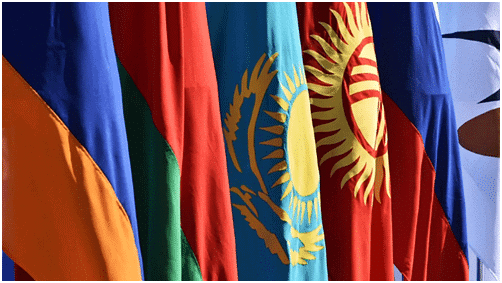
Why in News?
India is "seriously considering" initiating talks for a free trade agreement with the Eurasian Economic Union (EAEU), as announced by the Foreign Minister of Belarus during his recent two-day visit to India.
About Eurasian Economic Union (EAEU)
- Composition and Purpose:
- The EAEU is an international economic union and free trade zone comprising countries in central and northern Asia and Eastern Europe.
- Established by the Treaty on the Eurasian Economic Union, signed on May 29, 2014, in Astana.
- Member countries include Russia, Armenia, Belarus, Kazakhstan, and Kyrgyzstan.
- The union aims to comprehensively upgrade, enhance the competitiveness of, and foster cooperation among national economies, promoting stable development to improve the living standards in member states.
- Functions and Policies:
- The EAEU allows for the free movement of goods, services, capital, and labor.
- It pursues coordinated, harmonized, and unified policies in sectors specified by the Treaty and international agreements within the Union.
Structure
- Supreme Eurasian Economic Council:
- This is the highest body of the EAEU, consisting of the heads of the member states.
- Eurasian Economic Commission:
- Located in Moscow, it is the permanent supranational regulatory body of the Union.
- The Commission's main role is to ensure the functioning and development of the EAEU and to propose further integration initiatives.
- Court of the EAEU:
- Based in Minsk, it serves as the judicial body of the Union.
- The Commission’s powers are more limited compared to the European Commission; member states can appeal its decisions to other bodies and the Commission cannot compel member states to comply through the Court.
- Disputes are often settled bilaterally rather than through EAEU institutions.
- Currency:
- Unlike the European Union, the EAEU does not share a common currency.
GCC’s Vision for Regional Security
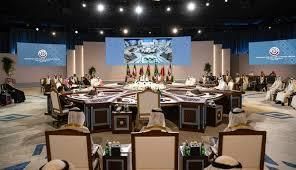
Why in News?
- The Gulf Cooperation Council (GCC) has launched its 'Vision for Regional Security,' a new initiative developed by the six-member bloc.
Dimension-Issues Covered in the Vision
- Scope of Topics: The vision encompasses 15 specific points covering regional security and stability, economic development, and climate change.
- Geopolitical Challenges: A major focus is resolving the issue of Israel's occupation of Palestinian territories, reaffirming the GCC's commitment to the Arab Peace Initiative from 2002.
- Despite Bahrain and the UAE normalizing relations with Israel, the vision calls for the end of Israeli settlements in the occupied West Bank and identifies this conflict as a key destabilizing factor in the region.
- Nuclear Non-Proliferation: The vision addresses nuclear non-proliferation, especially concerning Iran's nuclear program, while supporting the civil use of nuclear energy, a policy pursued by both the UAE and Saudi Arabia.
- Two-State Solution: It advocates for a two-State solution, the withdrawal of Israeli forces to pre-June 1967 borders, and the establishment of an independent Palestinian state with East Jerusalem as its capital.
- Additional Issues: The vision also covers cyber security, global energy market stability, climate change, the implementation of a 'circular carbon economy,' and securing water resources.
- Context of Launch: This document comes at a turbulent time in West Asia, following the Israel–Hamas War in October 2023. Its timing has raised questions about the security plan's details and implementation, especially amid ongoing conflict in Gaza and attacks on Red Sea shipping.
Fact Box: Gulf Cooperation Council (GCC)
- Formation and Membership: The GCC is an economic and political bloc formed in 1981 amid regional conflicts and tensions. Its members are Kuwait, Qatar, Bahrain, Saudi Arabia, the UAE, and Oman, all of which have significant oil resources and some of the highest per capita GDPs globally.
- Integration and Divergences: Despite aiming for greater economic and political integration, there have been substantial differences in regional policy goals among the members.
- Renewed Cooperation: A push for greater cooperation emerged after the 2021 Al-Ula Agreement, which ended the blockade on Qatar by Saudi Arabia, the UAE, Egypt, and Bahrain.
Switzerland to host Ukraine Peace Summit

Background
- The Russia-Ukraine war is in its third year, and Switzerland will host a peace conference on June 15-16, following the G7 Summit in Italy.
- Switzerland's initiative comes at the request of Ukraine’s President Volodymyr Zelenskyy, who visited Bern in January.
History of Swiss Mediation
- Neutrality is a core principle of Switzerland’s foreign policy.
- Switzerland has served as a protecting power since the 19th century, including during the Franco-Prussian War of 1870-71.
- It acted as the protecting power during both World Wars, with nearly 200 protective power mandates in World War II.
- Switzerland represented India’s interests in Pakistan and vice versa between 1971 and 1976.
- Over the past two decades, Switzerland has been the protecting power between Saudi Arabia and Iran, the US and Iran, Russia and Georgia, among others.
- The country has a history of hosting negotiations, such as the 2006 talks between Colombo and the Liberation Tigers of Tamil Eelam.
- During the Russia-Ukraine war, Switzerland has supported Ukraine and joined Western sanctions against Russia.
What are the Goals of the Summit?
- During President Zelenskyy’s visit to Bern in January 2024, Switzerland and Ukraine discussed steps towards a lasting peace in Ukraine.
- At Ukraine’s request, Switzerland agreed to host a high-level conference.
- The summit aims to "provide a platform for high-level dialogue on achieving a comprehensive, just, and lasting peace for Ukraine based on international law and the UN Charter."
- The conference seeks to "create a common understanding of the framework conducive to this goal and a concrete roadmap for the peace process."
- Switzerland has invited 120 countries, including India, to participate.
Russia’s Response to the Summit
- Russia has not been invited to the Ukraine-Russia Peace Summit by Switzerland.
- President Vladimir Putin stated there would be no peace in Ukraine until Russia’s goals are met and emphasized that nothing could be decided without Moscow.
- Putin suggested that without a Russian delegation, it might appear that Russia is refusing to negotiate.
- The Swiss foreign ministry will send invitations to around 120 countries, with Ignazio Cassis confirming that Russia will not participate.
India’s Participation in the Summit
- Prime Minister Narendra Modi’s schedule will be clear after the Lok Sabha results on June 4.
- Once the election results are declared and the government is formed, the Prime Minister will be ready to travel.
- This will be the Indian Prime Minister’s first overseas trip post-elections.
- It is expected that Italy will invite the PM to the G7 leaders’ summit as a guest, following the practice since 2019.
- After the G7 summit, attending the peace conference will be a "natural event" for the Prime Minister.
- Zelenskyy had sought India’s support on his 10-point “peace formula,” which includes the withdrawal of Russian troops, release of prisoners, restoration of Ukraine’s territorial integrity, and guarantees on nuclear safety, food, and energy security.
- India, aiming to balance diplomatic relations between Russia and Ukraine, will need to decide its stance on attending the peace conference.
India a Top Tier Security Partner for Australia
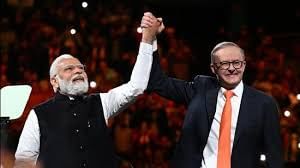
Australian Government in its National Defense Strategy (NDS) 2024
- The NDS 2024 identifies India as a 'top-tier security partner' in the Indo-Pacific Region (IPR).
- It emphasizes Australia's intention to seek opportunities with India for practical bilateral and multilateral cooperation, defense industry collaboration, and information sharing.
India-Australia Security Partnership in IPR
- Quadrilateral Security Dialogue (Quad): India and Australia, along with Japan and the US, are collaborating through the Quad to address urgent challenges in the IPR.
- Bilateral Cooperation: The two nations elevated their bilateral ties to a Comprehensive Strategic Partnership (CSP) in 2020.
- Maritime Cooperation: The 2020 Joint Declaration on a Shared Vision for Maritime Cooperation in the Indo-Pacific aims to promote peace, security, stability, and prosperity in the region.
- Defense Cooperation: Frameworks like the Mutual Logistics Support Arrangement and the Defense Science and Technology Implementing Arrangement enhance defense collaboration.
- Joint Military Exercise: AUSTRAHIND is a joint military exercise between India and Australia.
Significance of India-Australia Partnership in IPR
- Both countries share an interest in maintaining a rules-based order, freedom of navigation, and respect for international laws.
- They collaborate in emerging technologies and critical minerals.
- The partnership aims to secure regional balance of power, especially in response to Chinese aggression.
Other Aspects of India-Australia Ties
- Economic: The Economic Cooperation and Trade Agreement was signed in 2022.
- Clean Energy Cooperation: A Letter of Intent on New and Renewable Technology was signed in 2022.
- Critical Mineral Investment Partnership: A MoU was signed in 2022 between Australia's Critical Minerals Office and Khanij Bidesh Ltd (KABIL).
- Nuclear Cooperation: A Civil Nuclear Cooperation Agreement was signed in 2014.
Financing for Sustainable Development Report 2024: UN
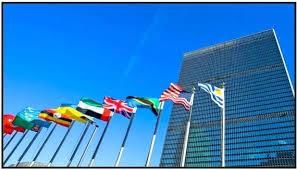
Key Highlights
- High financing gap for developing countries, ranging between $2.5 trillion and $4 trillion annually.
- Finance divides: Developing countries face significantly worse terms of access to both long-term and contingency financing.
- Weak enabling environment: Policy, regulatory and tax frameworks are not sufficiently aligned with SDGs.
Reasons for low financing of SDGs
- Rise in systemic risks have put National financing frameworks under severe stress.
- E.g., Covid 19 pandemic, Rise in frequency of disasters etc.
- Average GDP growth rates in developing countries fell to just over 4% annually (between 2021 and 2025).
- Median debt service burden for Least Developed countries (LDCs) rose to 12% in 2023.
- Other concerns: Digitization induced risks, Rising geopolitical tensions.
Recommendations
- Building tax capacity to improve tax revenue for delivering on SDGs.
- International Development cooperation to mobilizing other financial resources.
- E.g., new approach to blended finance focused on support for sustainable trade and responsible business conduct
- Intensified action to address debt challenges of developing countries.
- Enhancing coherence between trade, investment and sustainable development.
- Funding for data and statistical systems to focus on producing actionable insights for advancing SDGs.
|
88 videos|123 docs
|
FAQs on International Relations: May 2024 UPSC Current Affairs - UPSC Mains: International Relations
| 1. What is the significance of Vietnam's push for non-market economy status? |  |
| 2. Why is India's sugarcane subsidy under WTO scrutiny? |  |
| 3. What is the India-Nepal border dispute about? |  |
| 4. How has Japan's diplomatic posture been shifting? |  |
| 5. What is the Eurasian Economic Union and its significance? |  |





















